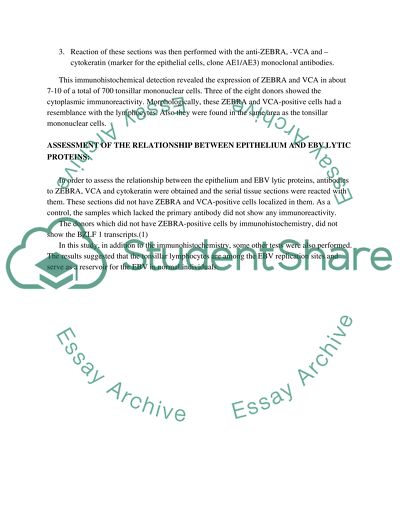Immunohistochemical method for identification of ebstein barr virus Essay. Retrieved from https://studentshare.org/chemistry/1549586-scientific-essay-coursework
Immunohistochemical Method for Identification of Ebstein Barr Virus Essay. https://studentshare.org/chemistry/1549586-scientific-essay-coursework.


